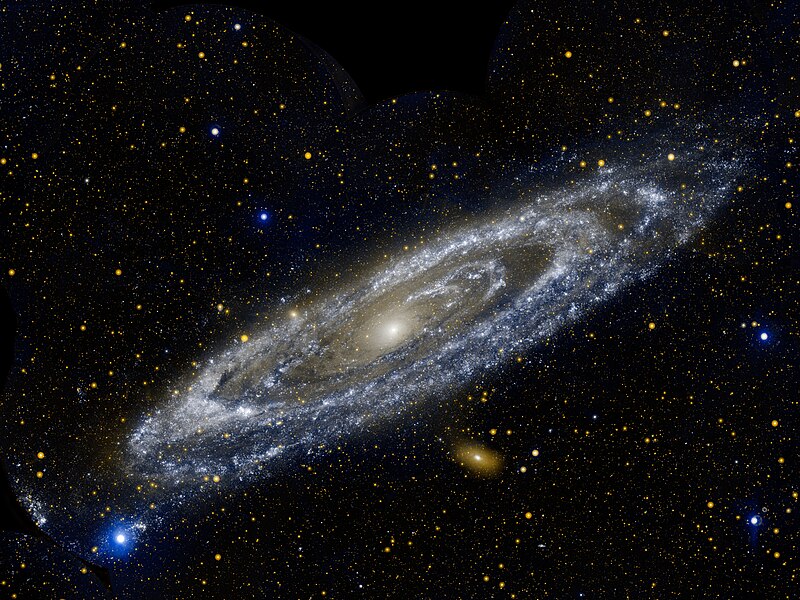Ficheiro:Andromeda galaxy 2.jpg

Dimensões desta antevisão: 800 × 600 píxeis. Outras resoluções: 320 × 240 píxeis | 640 × 480 píxeis | 1 024 × 768 píxeis | 1 280 × 960 píxeis | 2 560 × 1 920 píxeis | 6 000 × 4 500 píxeis.
Imagem numa resolução maior (6 000 × 4 500 píxeis, tamanho: 21,44 MB, tipo MIME: image/jpeg)
Histórico do ficheiro
Clique uma data e hora para ver o ficheiro tal como ele se encontrava nessa altura.
| Data e hora | Miniatura | Dimensões | Utilizador | Comentário | |
|---|---|---|---|---|---|
| atual | 10h09min de 21 de maio de 2012 |  | 6 000 × 4 500 (21,44 MB) | Originalwana | {{Information |Description ={{en|1=Hot stars burn brightly in this image from NASA's Galaxy Evolution Explorer, showing the ultraviolet side of a familiar face. At approximately 2.5 million light-years away, the Andromeda galaxy, or M31, is our [[:C... |
Utilização local do ficheiro
A seguinte página usa este ficheiro:
Utilização global do ficheiro
As seguintes wikis usam este ficheiro:
- af.wikipedia.org
- an.wikipedia.org
- ar.wikipedia.org
- bg.wikipedia.org
- de.wikipedia.org
- de.wikibooks.org
- en.wikipedia.org
- eu.wikipedia.org
- fr.wiktionary.org
- hr.wikipedia.org
- it.wikipedia.org
- ja.wikipedia.org
- ko.wikipedia.org
- lb.wikipedia.org
- lv.wikipedia.org
- no.wikipedia.org
- pl.wiktionary.org
- ro.wikipedia.org
- scn.wikipedia.org
- sh.wikipedia.org
- simple.wikipedia.org
- sr.wikipedia.org
- sv.wikipedia.org
- ta.wikipedia.org


